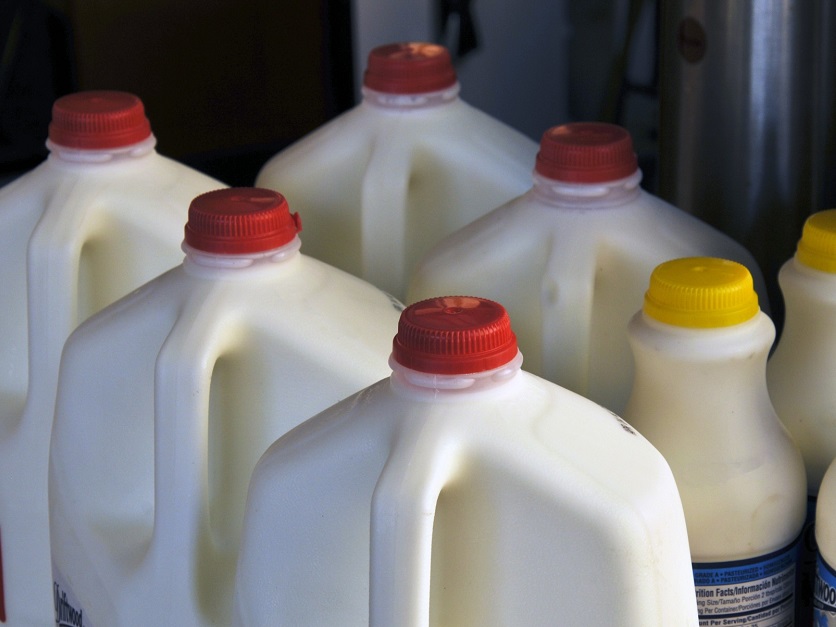U.S. trade officials are now armed with new knowledge as they enter their second battle with Canada over its restrictions on dairy trade: Even in losing, Canada can win.
After losing its last dairy dispute with the U.S. under the U.S.-Mexico-Canada Agreement, Canada managed to emerge with even tighter controls on what it imports from the U.S., frustrating U.S. exporters and Canadian importers who have only seen trade conditions deteriorate.
The U.S. dairy industry and Canadian importers — the companies that need foreign cheese and other products to thrive — are optimistic that the Office of the U.S. Trade Representative has a sound strategy for not only winning again, but winning in a way that actually pries the Canadian market open in a more meaningful way for exporters and importers.
“Canada has shown over and over that if it’s given room to wriggle out of its dairy trade commitments, that’s just what it will try to do,” says Shawna Morris, senior vice president for trade policy at the U.S. Dairy Export Council and National Milk Producers Federation. “USTR and USDA are on the right track with the newly launched dispute settlement case and using it to ensure that Canada finally lives up to the agreements it struck under USMCA on dairy market access.”
 Shawna Morris, USDEC and NMPF
Shawna Morris, USDEC and NMPF
The International Cheese Council of Canada says its members need better access to U.S. cheese, but they did not get it after the first U.S. victory over Canada. Before that victory, under the quota system Canada set up to meet the commitments it agreed to under USMCA, ICC members were only able to eke out about 7,000 pounds of U.S. cheese imports annually — far below the 44,000 pounds they needed, Chairman Joe Dal Ferro tells Agri-Pulse.
“As a result of the changes implemented by the Canadian government following the first dispute panel decision, our members’ ability to import American cheeses into Canada has worsened, in most cases,” he said.
When Canada first set up the system of 14 separate quotas to enact its promise under USMCA to increase dairy imports from the U.S., it gave a minimum of 80% of those quotas to large Canadian processors and the rest to secondary processors and distributors. The U.S. argued — and a dispute panel eventually agreed — that the system effectively lowered the value of the quotas that were supposed to increase U.S. access to Canada’s dairy market.
The 14 quotas are for milk, cream, skim milk powder, butter and cream powder, industrial cheeses, cheeses of all types, milk powders, concentrated or condensed milk, yogurt and buttermilk, powdered buttermilk, whey powder, products consisting of natural milk constituents, ice cream and ice cream mixes and “other dairy.”
After the USMCA dispute panel ruled on Dec. 20, 2021, that Canada’s system of reserving large tariff rate quota portions “exclusively for the use of processors is inconsistent with Canada’s commitment” under USMCA, Canada changed its tactics. The country instead forged a system under which the government calculated how much of each quota went to applicants based on various market share factors.
Canadian processors would again be getting the lion’s share of the quotas because their allocations would be made based on how much they manufacture, said Becky Rasdall, vice president of trade policy and international affairs for the International Dairy Foods Association. Similar calculations were made for secondary processors and distributors.
That means the companies that have the least need for imports are now getting the biggest share of the quotas to import from the U.S., said Morris.
“A butter producer in Canada has no interest in importing butter from the U.S. and that’s the same with cheese or anything else,” said Rasdall.
And the companies that truly want to import U.S. dairy products are the ones that suffer, said ICC’s Dal Ferro.
The new Canadian quota allocation system “once again disproportionately gives quota to Canadian domestic processors, at the expense of other eligible quota applicants like importers (or) distributors, who are currently importing, and are capable of importing more American cheeses for Canadian consumers,” Dal Ferro said.
Canada has widely different fill rates for individual dairy quotas, according to data provided by USDEC. While Canada filled 86% of its 2022 calendar year quota for “cheeses of all types,” it only filled 12% of the quota for “powdered buttermilk.”
 Becky Rasdall, IDFA
Becky Rasdall, IDFA
When U.S. Trade Representative Katherine Tai announced a week ago that the U.S. was starting a second dispute process against Canada’s quota system, she stressed that she was also taking aim at the fact that Canada still refuses to allocate quota portions to Canadian retailers and restaurants.
Those retailers and restaurants are not just the companies that most want U.S. products, but they are also key to Canada actually filling the quotas, said Morris.
Don’t miss a beat! It’s easy to sign up for a FREE month of Agri-Pulse news! For the latest on what’s happening in Washington, D.C. and around the country in agriculture, just click here.
Mathieu Frigon, president and CEO of the Dairy Processors Association of Canada (DPAC), disagrees with the U.S. government and U.S. dairy groups on this. He tells Agri-Pulse that while it is true that the large Canadian processors still control most of the quota allocations, that’s how it should be in order to maintain the stability and predictability of Canada’s supply management system.
“We’ve always been of the position that processors (should have) the majority of the TRQs,” he said.
Frigon says the DPAC is content with the changes Canada made to its quota system after the first dispute panel made its ruling, and the DPAC is preparing to work with Ottawa to defend against U.S. demands in the second dispute.
The Canadian government has its own separate corporation to set prices that powerful processors pay farmers for their milk — a testament to how tightly Canada controls its dairy sector — and now that government is preparing for battle with the U.S. once again.
“Canada will continue to defend our supply management system and the market access which was agreed upon with the U.S.,” said Canadian Trade Minister Mary Ng. “We will stand firm against attempts to renegotiate during this dispute settlement process.”
For more news, go to www.Agri-Pulse.com.


